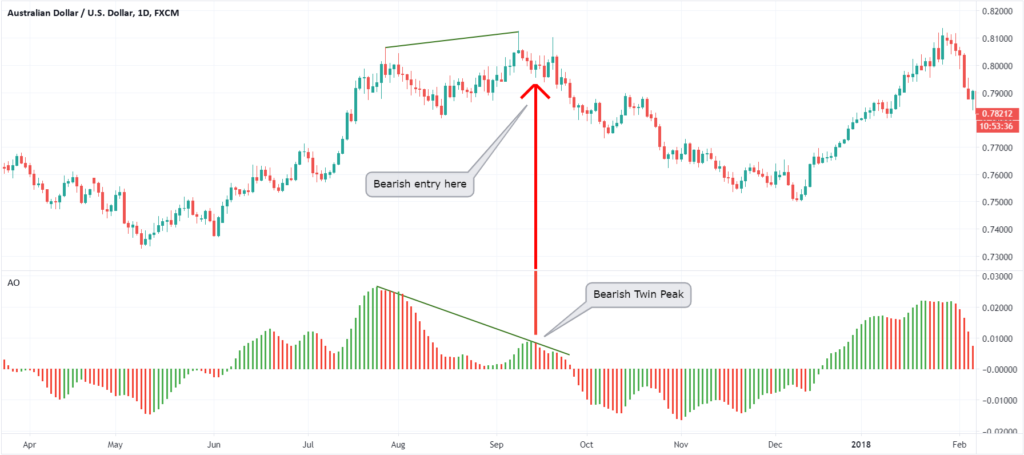INDICATORS AND OSCILLATORS IN TRADING

Trading in financial markets involves making informed decisions based on various tools and analyses. Among these tools, indicators and oscillators play a crucial role in helping traders identify trends, reversals, and potential entry or exit points. In this comprehensive guide, we will delve into the significance of indicators and oscillators in trading.
Indicators and Oscillators in Trading: A Guide to Market Analysis
In the dynamic world of trading, market participants rely on a variety of tools and technologies to make informed decisions. Among these tools, indicators and oscillators play a vital role in analyzing price movements, identifying trends and assessing market strength. Let’s take a deeper look at the importance of these tools and how traders use them in their daily activities.
Learn about metrics:
Indicators are mathematical calculations based on historical price and volume data. They provide a visual representation of market behavior and help traders identify potential entry and exit points. Common indicators include moving averages, relative strength index (RSI), and moving average convergence divergence (MACD).
Moving Average: This indicator smoothes price data to create a moving line that helps traders identify trends over a specific time period. The convergence or divergence of different moving averages can indicate possible trend changes.
Indicators: Unveiling Market Trends
Type of indicators:
- Trend Indicators:
- Moving Averages: Smooth out price data to identify trends over a specified period.
- MACD (Moving Average Convergence Divergence): Compares two moving averages to reveal potential buy or sell signals.
- Momentum Indicators:
- RSI (Relative Strength Index): Measures the speed and change of price movements, indicating overbought or oversold conditions.
- Stochastic Oscillator: Identifies potential trend reversals by comparing a security's closing price to its price range.
- Volatility Indicators:
- Bollinger Bands: Display volatility and potential overbought or oversold conditions.
- Average True Range (ATR): Measures market volatility over a specified period.
Oscillators: Gauging Market Momentum
Oscillators are momentum indicators that help traders identify overbought or oversold conditions, providing signals for potential trend reversals.
Common Oscillators:
- Relative Strength Index (RSI):
- Values above 70 suggest overbought conditions, while values below 30 indicate oversold conditions.
- MACD (Moving Average Convergence Divergence):
- Measures the relationship between two moving averages, providing signals for potential trend reversals.
- Stochastic Oscillator:
- Consists of two lines, identifying potential buying or selling opportunities based on overbought or oversold conditions.
How Traders Utilize These Tools:
- Trend Identification: Moving averages and MACD assist traders in identifying trends. Crossovers and divergence patterns can signal potential trend changes.
- Momentum Assessment: Oscillators like Stochastic and RSI help assess the momentum behind price movements. Sudden shifts in momentum can indicate potential reversal points.
- Confirmation of Signals: Traders often use a combination of indicators and oscillators to confirm trading signals. A buy signal from a moving average crossover, supported by RSI indicating oversold conditions, may provide a stronger basis for a trade.
- Risk Management: Indicators and oscillators assist traders in setting stop-loss levels and determining the appropriate size for their positions, contributing to effective risk management.
Conclusion
Enhancing Trading Precision Integrating indicators and oscillators into your trading strategy can enhance your ability to make informed decisions. However, it's crucial to understand that no tool guarantees success. Traders should use these tools as part of a comprehensive strategy, considering market conditions, risk tolerance, and their individual trading goals. Regular analysis and adaptation of your approach based on market dynamics will contribute to trading success over the long term.
Indicators and oscillators are invaluable tools for traders seeking to understand market dynamics, identify trends, and make informed decisions. However, it's crucial to note that no tool guarantees success in trading. Traders should combine these tools with a comprehensive understanding of market fundamentals and a disciplined approach to risk management for optimal results in the ever-evolving world of financial markets.
Trading oscillators
Trading oscillators are technical indicators that are used by traders to identify potential points of trend reversal or overbought/oversold conditions in the market. These indicators are based on mathematical calculations and are typically displayed as lines or histograms on a price chart.
One popular trading oscillator is the Relative Strength Index (RSI), which measures the speed and change of price movements. It oscillates between 0 and 100, with readings above 70 indicating overbought conditions and readings below 30 indicating oversold conditions.
Another commonly used oscillator is the Moving Average Convergence Divergence (MACD), which compares two moving averages of a security's price to identify potential trend reversals. When the MACD line crosses above the signal line, it generates a buy signal, and when it crosses below the signal line, it generates a sell signal.
Stochastic Oscillator is another popular oscillator that measures the closing price of a security in relation to its price range over a specific period of time. It oscillates between 0 and 100, with readings above 80 indicating overbought conditions and readings below 20 indicating oversold conditions.
Overall, trading oscillators can be valuable tools for traders to identify potential entry and exit points in the market. However, it's important to note that no indicator or oscillator is perfect, and they should always be used in conjunction with other forms of analysis to make well-informed trading decisions.

Leave a Reply